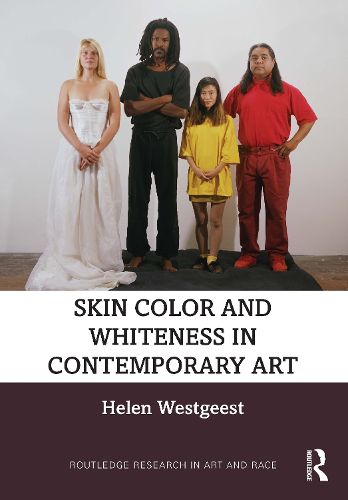Readings Newsletter
Become a Readings Member to make your shopping experience even easier.
Sign in or sign up for free!
You’re not far away from qualifying for FREE standard shipping within Australia
You’ve qualified for FREE standard shipping within Australia
The cart is loading…






This study demonstrates the significance of using contemporary art in scholarly debates about cultural aspects of skin, in particular "whiteness" as a phenomenon that is both overly visible and invisible.
There is a need for a study of these artists' strategies, which consist of drawing attention to whiteness by means of making whiteness "strange" through alternative visibilities. By increasing skin awareness, the selected socio-critical artworks also pertain to foster visual literacy as another important contemporary concern. Chapters mainly focus on recent artworks that address ongoing skin-related debates in countries in Europe and North America, rooted in histories of ideology of white supremacy. Moreover, these artworks critically reflect on the alleged superiority of the history of Western European painting, including a focus on the representation of pale skin as model of beauty.
The book will be of interest to scholars working in art history, race and ethnicity studies, and cultural studies.
$9.00 standard shipping within Australia
FREE standard shipping within Australia for orders over $100.00
Express & International shipping calculated at checkout
This study demonstrates the significance of using contemporary art in scholarly debates about cultural aspects of skin, in particular "whiteness" as a phenomenon that is both overly visible and invisible.
There is a need for a study of these artists' strategies, which consist of drawing attention to whiteness by means of making whiteness "strange" through alternative visibilities. By increasing skin awareness, the selected socio-critical artworks also pertain to foster visual literacy as another important contemporary concern. Chapters mainly focus on recent artworks that address ongoing skin-related debates in countries in Europe and North America, rooted in histories of ideology of white supremacy. Moreover, these artworks critically reflect on the alleged superiority of the history of Western European painting, including a focus on the representation of pale skin as model of beauty.
The book will be of interest to scholars working in art history, race and ethnicity studies, and cultural studies.